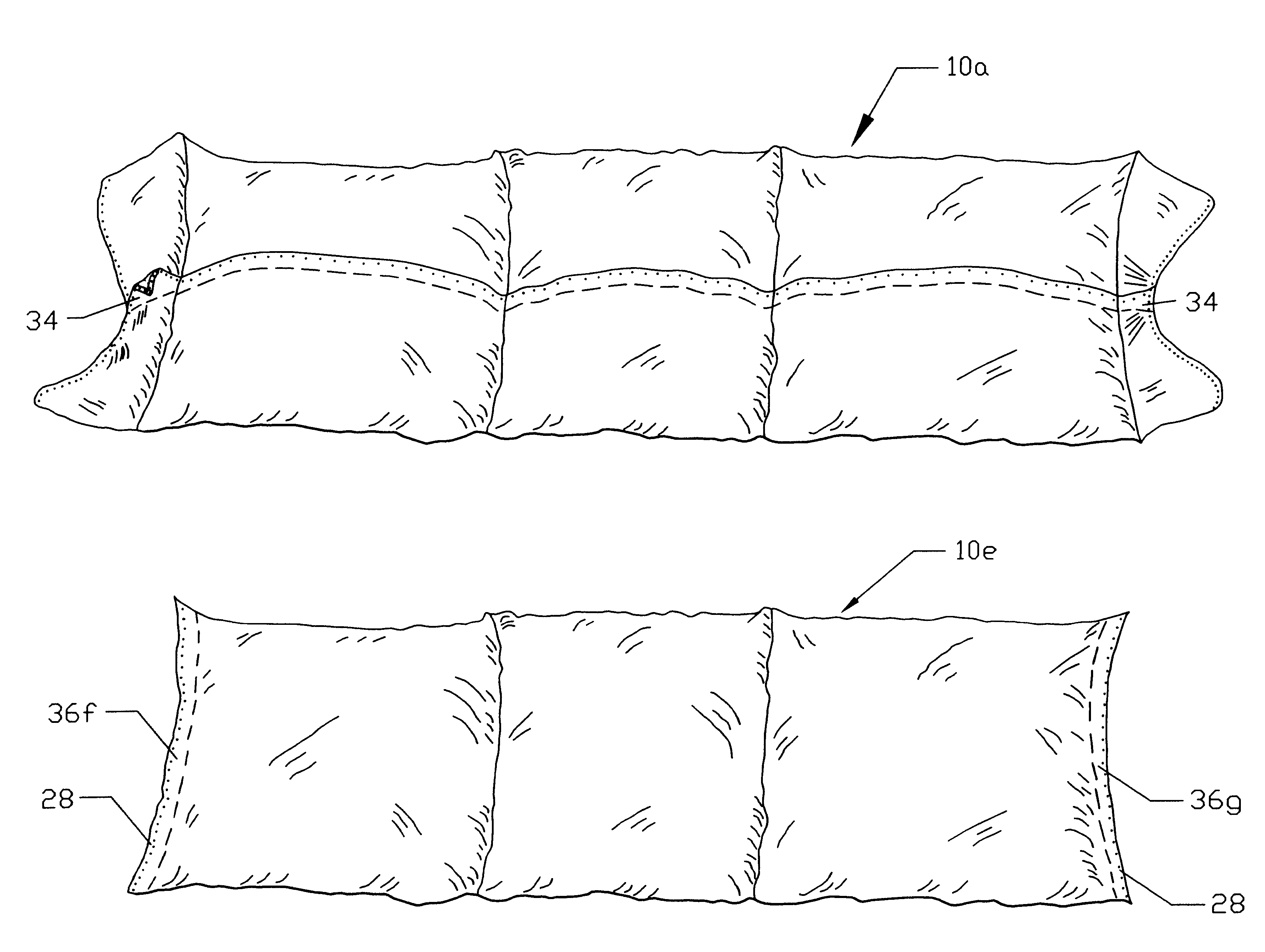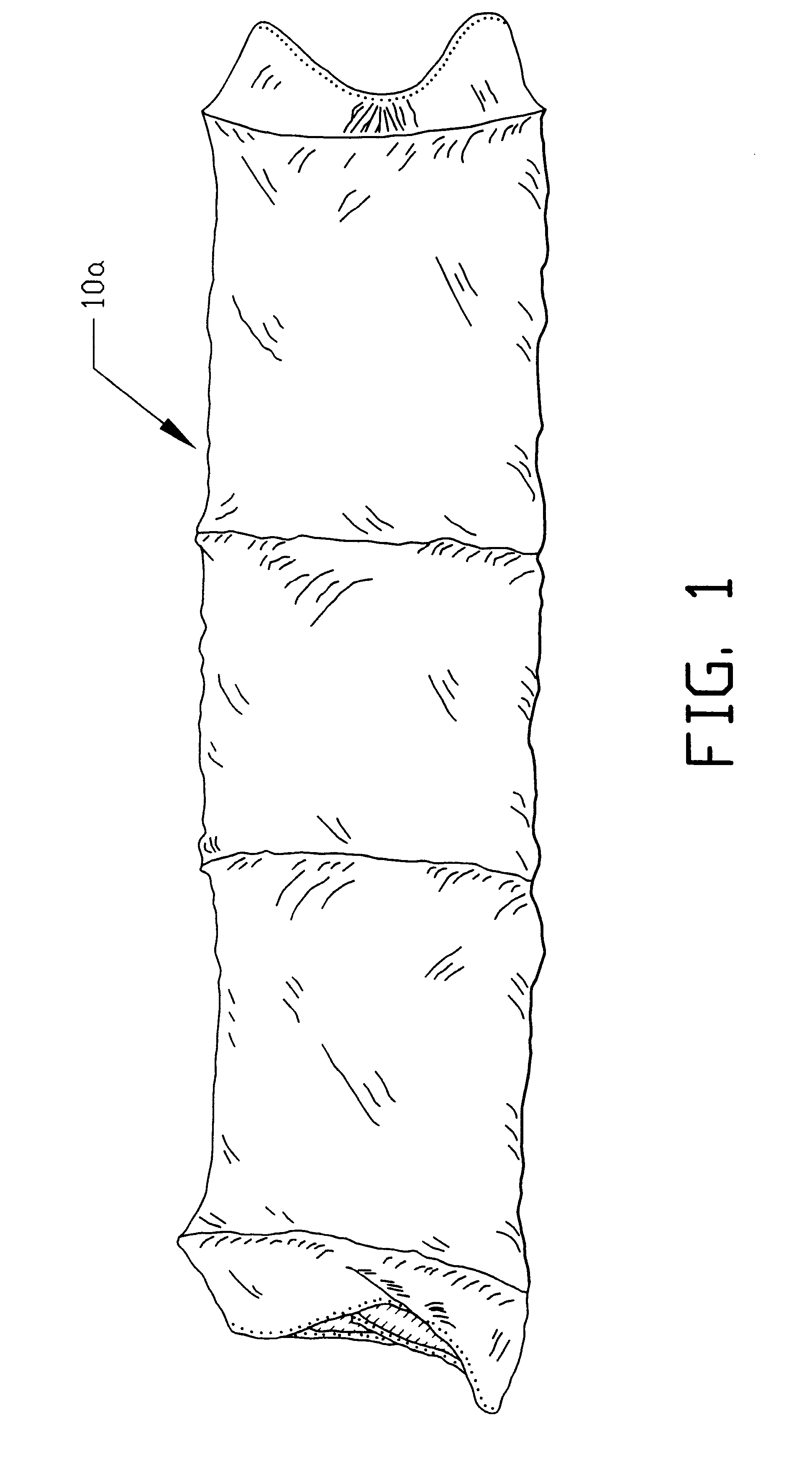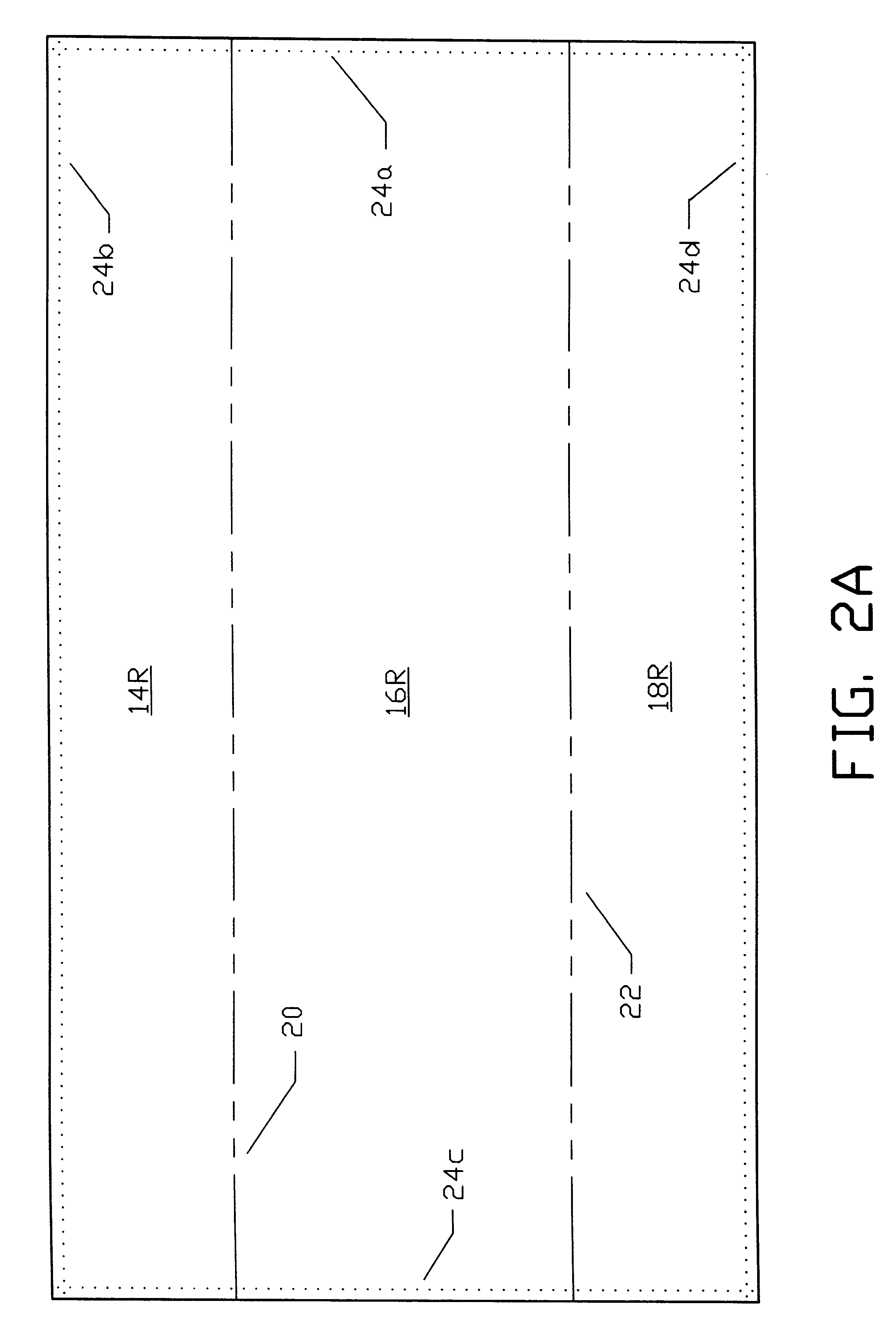Unitary pillow sham
a pillow and unitary technology, applied in the field of pillow covers, can solve the problems of wasting time, adding to the pressure and hectic schedule, costing money, and occupying more time and energy
- Summary
- Abstract
- Description
- Claims
- Application Information
AI Technical Summary
Problems solved by technology
Method used
Image
Examples
Embodiment Construction
A preferred embodiment of the unitary pillow sham of the present invention is illustrated in FIG. 1 (front perspective view) and FIG. 6 (rear perspective view). In the drawings, a unitary pillow sham 10a is adapted to enclose in secure fashion three bed pillows collectively represented as pillow 12, all of substantially equal height and two of substantially equal width with one pillow being an approximate measure of lesser width than the other pillows, each pillow inserted separately into a first pillow pocket 38, a second pillow pocket 40, and a third pillow pocket 42 through respective first, second, and third pocket openings 38a, 40a, and 42a and, at the same time, present flanges 36a-b and a flange overlap 34 at either vertical side end of the sham. For a better understanding of the construction of the unitary pillow sham, the manner in which it is constructed and secured will initially be described. FIG. 2 shows an elongated length of one-piece fabric in a size suitable to pres...
PUM
 Login to View More
Login to View More Abstract
Description
Claims
Application Information
 Login to View More
Login to View More - R&D
- Intellectual Property
- Life Sciences
- Materials
- Tech Scout
- Unparalleled Data Quality
- Higher Quality Content
- 60% Fewer Hallucinations
Browse by: Latest US Patents, China's latest patents, Technical Efficacy Thesaurus, Application Domain, Technology Topic, Popular Technical Reports.
© 2025 PatSnap. All rights reserved.Legal|Privacy policy|Modern Slavery Act Transparency Statement|Sitemap|About US| Contact US: help@patsnap.com



